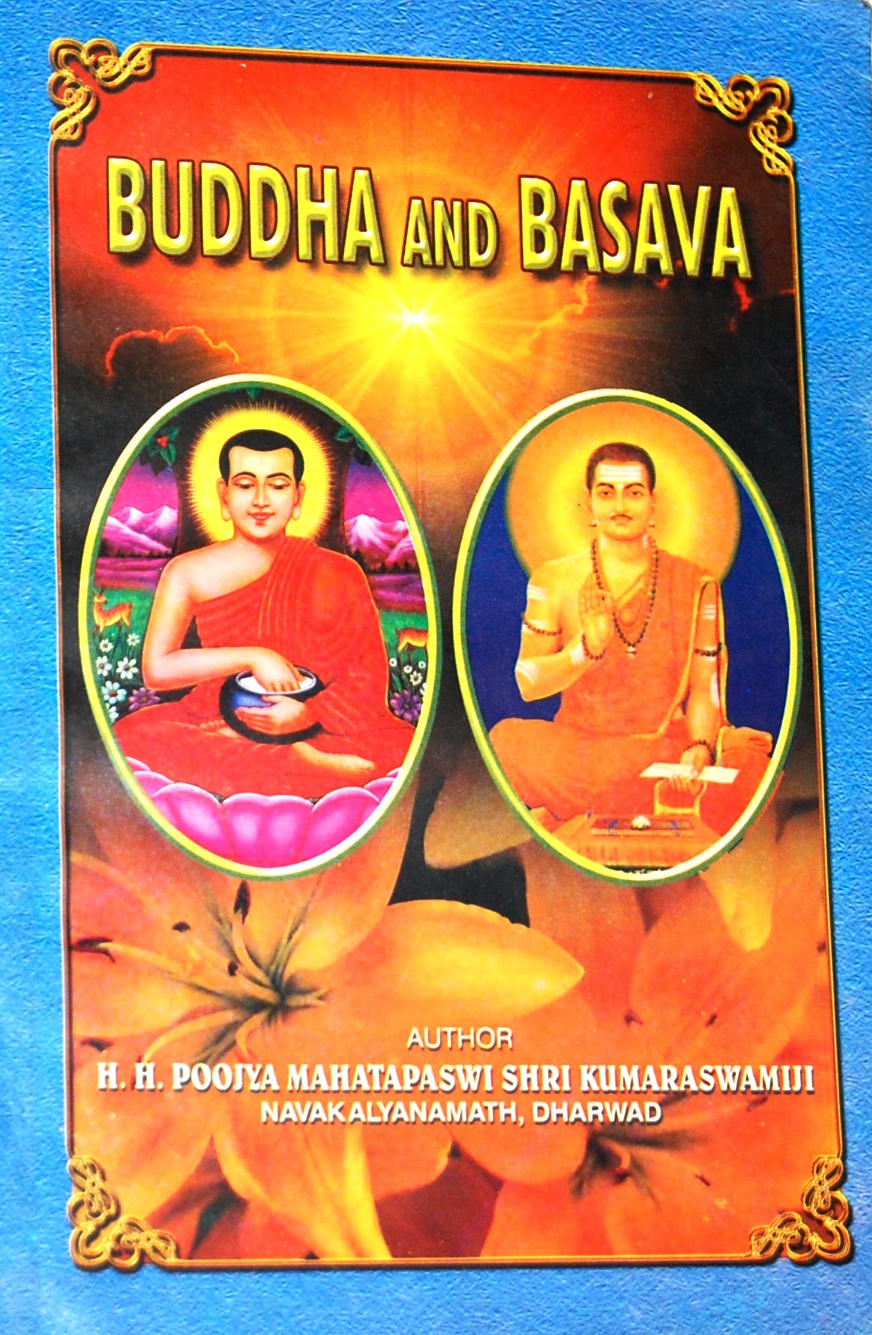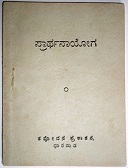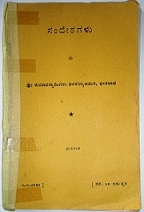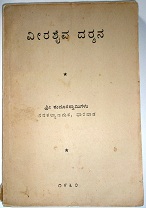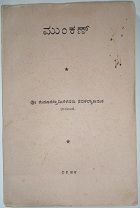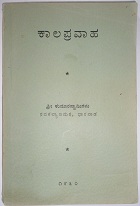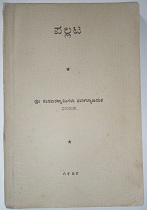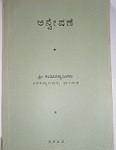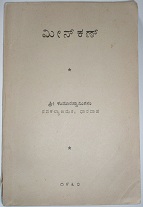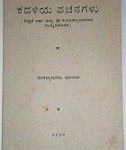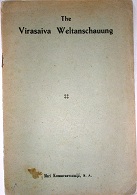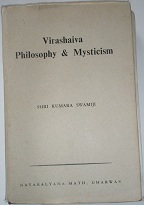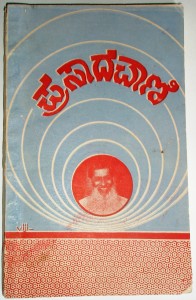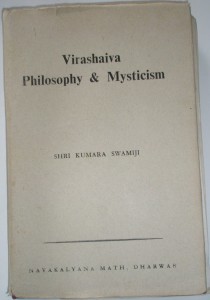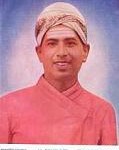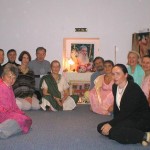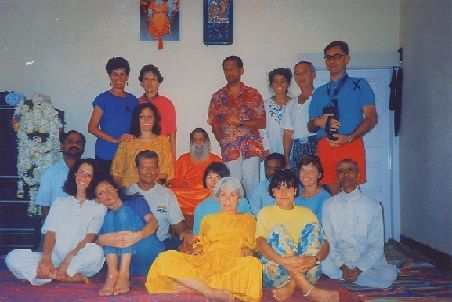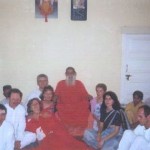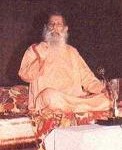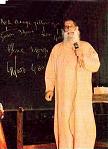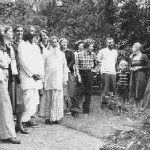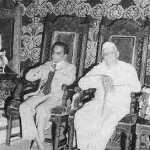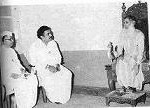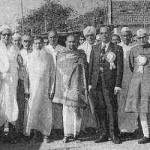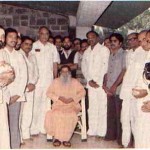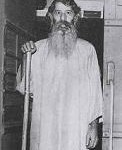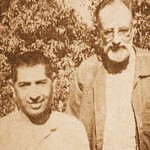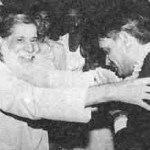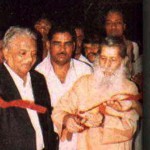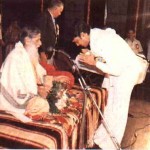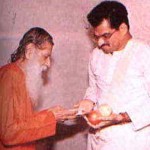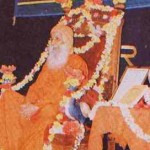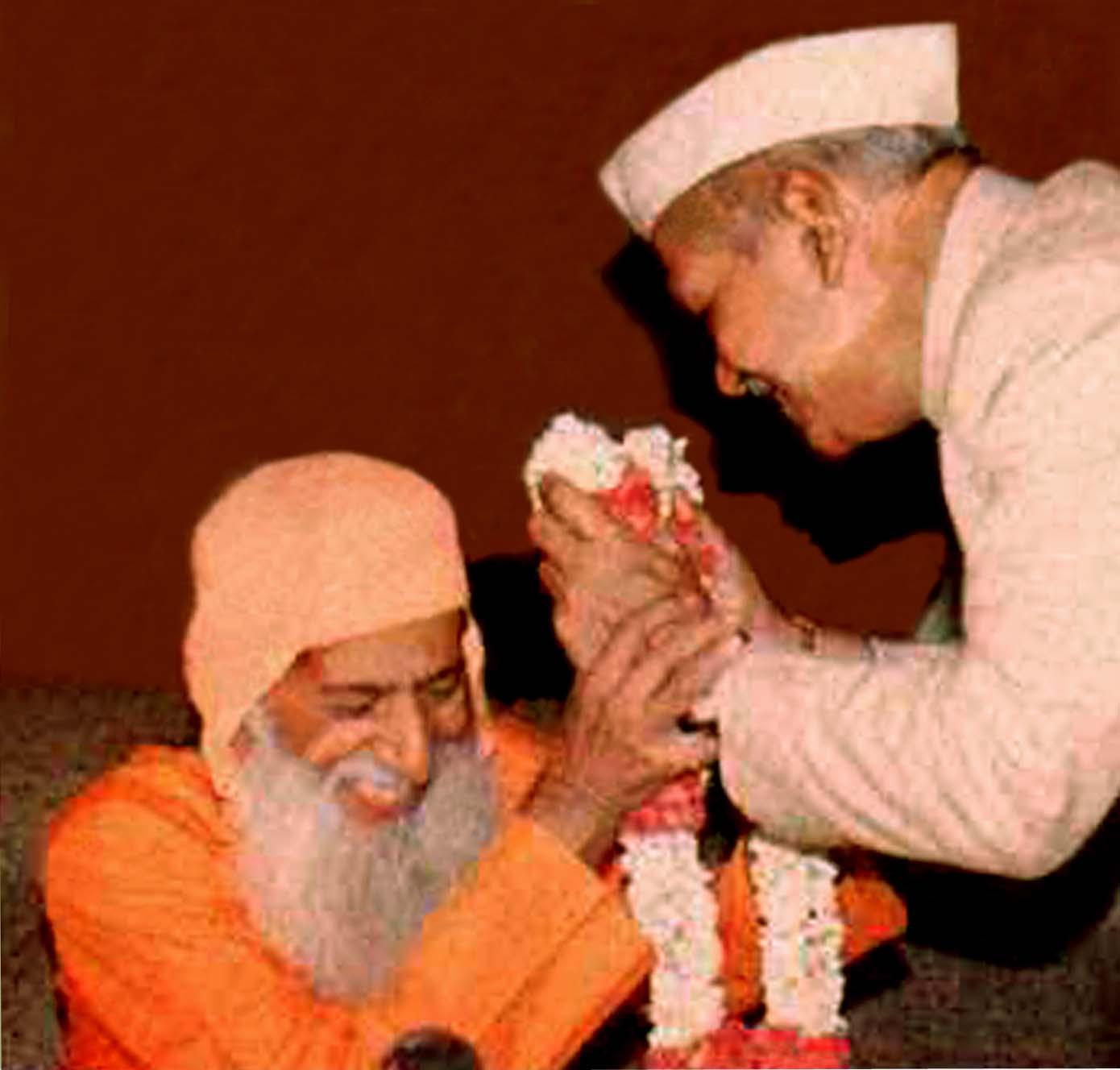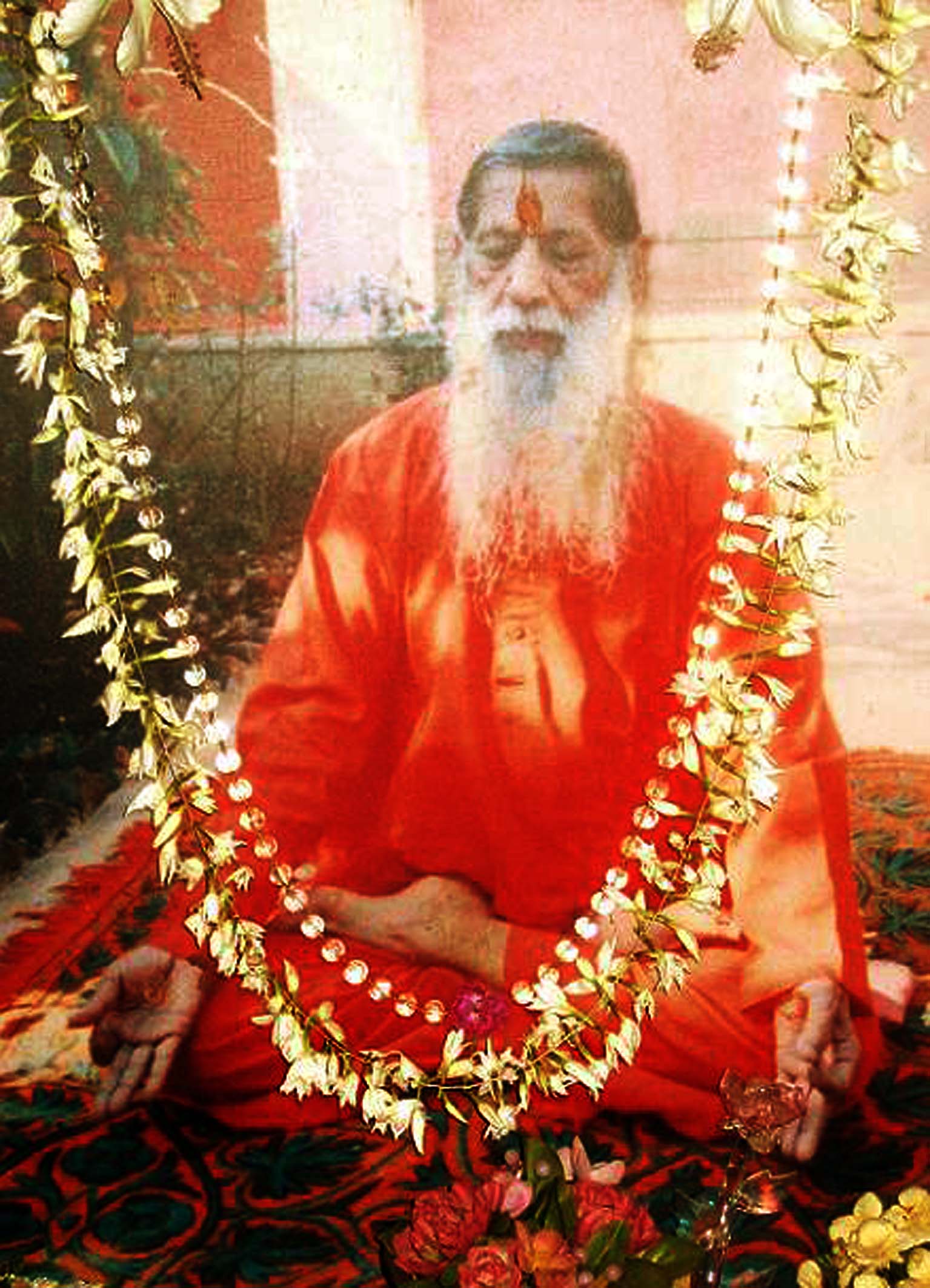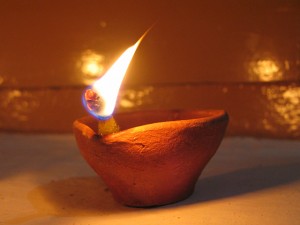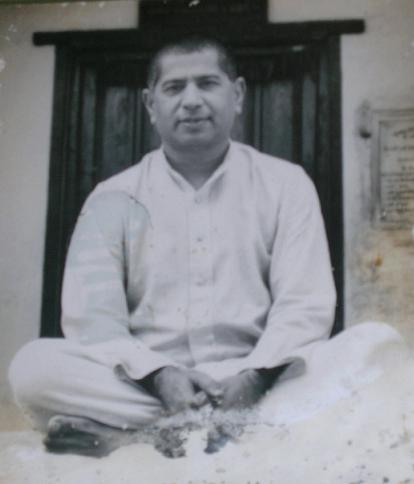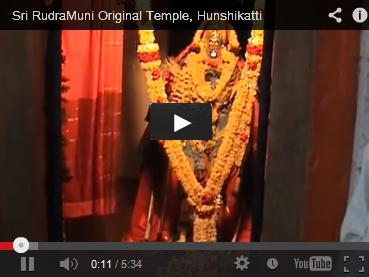Virashaivism acknowledges four entities Prakriti, Purusha, Para-prakriti and Para-brahman that is Matter, Self, Will and Spirit. That there is an integral association between these four entities is clear enough from Shakti-Vishista-Advaita which is the Virashaiva designation of philosophical Theism. If the Theory of Relativity has introduced the conception of the four dimensional continuum in the domain of physics Shakti-Vishishta-Advaita has ushered in the domain of metaphysics, ‘the doctrine of four units’. Shakti Vishishtha Advaita or the Relative Dualism as we prefer to call it, has as yet remained outside the perview of prominent scholars, since no serious attempt has been made to expose it in a scientific method; for method may be said to constitute three-fourths of any science.
The Shaivagamas generally preach a theistic philosophy which believes in a Supreme Being, who is the creator of man and the universe, distinct from both, yet intimately related to both. Theism then posits three entities : Being, man and the world, which go by the name of Trika Shidhanta in the Shaiva schools. They acknowledge three entities Tattvas (1) A Supreme Being (2) The subjective souls and (3) The objective world. These three entities, Tattvas are given different names in the different Schools of Shaivism, but their attributes and mutual relations do not vary much, though the terminology varies from School to School. These Schools all agree in opposing Maya-vada, the doctrine of the unreality of the world. Says the Pauskaragama, “If the world is an illusive appearance of conscious being, the effected world will be a hollow unreality; how can the world which is established to be really existing by all methods of proofs be a false transmutations of consciousness?” The Agamas do not regard the world as an illusion or a false show. Bhaskaracharya says, “Really according to the belief of the Tantrikas, who hold the doctrine that the world is a transmutation of Brahman, the universe is real; because as there is absolutely no difference between Brahman and the world, just as there is no difference between a pot and the clay of which it is made, the reality of the universe necessarily follows from the reality of Brahman.”
It is clear from this that the Agamas do not deny the reality of the world, but they identify it with Shiva who transcends it. He is one without a second; He is the All. If all is Brahman then there can be nothing but Brahman and therefore the existence of the all does not contradict the unity of the final truth, does not establish the reality of difference. It is one Samvit or Mahat, the cosmic intelligence looking at itself from a myriad view-points, each point conscious of and enjoying the existence of the others. One form or one particular self-expression may disappear into its source and continent; but that does not and cannot abolish the phenomenal universe. Therefore the Agamas regard the world as a great game of ‘hide and seek’ in which the real hides behind the apparent, spirit behind the matter. “Everything becomes, nothing is made. Everything is put out from latency, nothing is brought into existence. Only that which was can be, not that which was not. And that which is cannot perish, it can only lose itself; hence all is eternal in the eternal spirit.” Why should we think so? Because of the eternal and invariable unity which gives permanence to the variability of the many. Therefore in all things is seen the stress of the hidden spirit; it is Prajna, the universal intelligence, conscious in things unconscious, active in things inert. The energy of Prajna is what the Agamas call Shakti. The tree does not and cannot shape itself; the stress of the hidden spirit shapes it. The seed evolves a tress because the tree is the idea involved in the seed. If there were no such insistent idea we should have a world of chances and freaks, not a world of law. There would be no such notion as the nature of things, if there were not an originating and ordering intelligence manifesting a particular idea in forms. The Real, the Idea, the Phenomenon – this seems to be the true order of theistic philosophy.
Hegel, the protagonist of modern philosophical theism gives a graphic account of these three entities. “Being is the notion implicit only; the special forms have the predicate ‘is’. Pure Being makes the beginning, because it is on the one hand pure thought, and on the other immediacy itself, simple and indeterminate; and the first beginning cannot be mediated by anything, or be further determined…… Being-for-itself, as reference to itself, is immediacy, and as reference of the negative to itself, is a self-subsistent, the One….. The terms in essence are always mere pairs of correlatives, and not yet absolutely reflected in themselves; hence in essence the actual unity of the notion is not realized but only postulated by reflection. Essence, which is Being coming into meditation with itself through the negativity of itself, is self-relatedness only, in so far as it is in relation to all other – this other however coming into view at first not as something which is, but as postulated and hypothesized. Being has not vanished; but firstly, Essence, as simple self-relation is Being, and secondly as regards its one-sided characteristics of immediacy, Being is deposed to a more negative, to a seeming or reflected light……. Essence accordingly is Being thus reflecting light into itself……… The Essence lights up in itself or is mere reflection and therefore is only self-relation, not as immediate but as reflected. And that reflex relation is self-identity…. Essence is mere identity and reflection in itself only as it is self-relating negativity, and in that way self-repulsion. It contains therefore essentially the characteristic of difference. The notion is the power of the substance self-realized. It is a systematic whole, in which each of its constituents functions, is the very total which the notion is….. The onward motion of the notion is no longer either a transition into, or a reflection on something else, but development. The realization of the notion – a realization in which the universal is this one totality withdrawn back into itself and which has given itself a character of immediate unity by merging the mediation; this realization of the notion is the object.”
The characteristic Theism of the Agama Schools lent to the conception of Shiva being regarded as the final cause of the universe. But the Shaiva system became individed into four different Schools with reference to the question how far causal efficiency belongs to the Will of Shiva and how far to the actions of souls. These Schools are:
(1) The Lakulisha Pashupata of the Guzerat which prefers to call the Supreme Being Pashupati, the Lord of the cattle;
(2) The Shaiva Siddhanta of the Southern India, which deals more with the three Malas, the three-fold impurities of the individual;
(3) The Pratyabhijna School of Kashmir which attempts to unravel the net-work of the five limitations of the individual that is, the Panch-Kanchukas of the Purusa;
(4) The Virasahiva School of Karnataka prefers to call the Supreme Being Sthala, the nature of which is designated as at once the static and dynamic, the transcendent and immanent.
With respect to the question of the causal efficiency of Shiva and of Karma, the Pashupata School maintains that Shiva is a cause, independent of the actions of the individual but that the “efficiency of actions depends upon an individual’s power of action being unobstructed, on account of conformity with the infinitely potent Will of the Lord” The Siddhanata School regards Shiva as the universal Agent, but not irrespective of individual action. “The fruition of the actions, good as well as bad, reaches the individual souls by the order of the Lord. His dependence on the action of the individual does not detract from His independence, just as a King’s depending on his guards to protect his city does not detract from the royal power. Just as the holder of a magnet directs the motion of a needle, so the Lord directs the fruits of the actions to the proper individuals.” The Pratyabhijna School conceives Maheshvara to create the universe by mere force of desire, for he is of unobstructed power, bliss and independence. This School, therefore denies causal efficiency to all but the Will of Maheshvara. The Virashaiva School agrees with Pratyabhijnan in ascribing the causal efficiency to the Will of God, but it goes a step further and says that this divine Will or Chit-Shakti is the integral conscious power of the Supreme Being which is behind the self and the cosmos.
This integral association of Shiva-Shakti which has been thrown into lurid light by Virashaivism is described thus in the Anubhava Sutra:
Shaktirapratima sakshat shivena Sahadharmini
Sakshini satya-sampurna nirvikalpa Maheshvari
And the same Sutra gives a vivid image of the Supreme Being:
Ekameva para-brahma Sat-chit-ananda-lakshnam
Shiatatvam shivacharyah Sthalam ityahuradarat.
Sarvesam sthanabhutatvat layabhutatvatah tatha
Tatvanam mahadadinam Sthalam ityabhidiyate.
Yatradou sthiyate vishvam prakritam pourusam yatah
Liyate punar ante cha Sthalam tat prochyate tatah.
Sthakarah sthanavachi syat lakaro laya-vachakah
Tayoh karanbhutam yet tadeva Sthalamuchyate.
All the three Shaiva Schools recognize only three entities: Prakriti, Purusa and Parabrahman. The Supreme Being, Self and the Cosmos. The stress of the hidden spirit or the Will of Parabrahman has not been brought to the fore-front in those Schools though all have an implicit faith in it. It is in the Shaktagmas that we find the Will playing an important role, but there the Shakti gets the upper hand of Shiva who lies inert and upon whose breast she dances her dance celestial. Virashaivism maintains a perfect balance between Truth and Will by saying that Shakti is the personality of Shiva; that the Will or Para-prakriti is the very soul of Para-brahman. Hence Virashaivism acknowledges four entities Prakriti, Purusha, Para-prakriti and Para-brahman that is Matter, Self, Will and Spirit. That there is an integral association between these four entities is clear enough from Shakti-Vishista-Advaita which is the Virashaiva designation of philosophical Theism. If the Theory of Relativity has introduced the conception of the four dimensional continuum in the domain of physics Shakti-Vishishta-Advaita has ushered in the domain of metaphysics, ‘the doctrine of four units’. Shakti-Vishishta-Advaita or the Relative Dualism as we prefer to call it, has as yet remained outside the perview of prominent scholars, since no serious attempt has been made to expose it in a scientific method; for method may be said to constitute three-fourths of any science. Discoveries may occasionally be due to accident, or what happens to be such, but a genuine advance in any science is always accompanied by a change in method and new results are but the application of improved methods of investigation. There is a special reason for emphasizing the importance of method in the study of metaphysics, since it yields the true and sure foundation for the art of mysticism. In the domain of metaphysics Advaita admits one and only one entity; Dvaita, preferably Sankhya, admits two entities; Vishista-Advaita (Theism) admits three entities and Shakti-Vishista-Advaita admits four entities. The following paragraphs endeavour to give a disquisition of this doctrine of four units or entities in as much a scientific method and manner as possible.
Man is a mental being, the Purusa, who is essentially self-conscious; but self-conscious implies a separation into two aspects – subject and object, mind and matter. The modern name of consciousness or ‘awareness’ equally implies this, for awareness implies something of which it is aware, a duality at the least. In the highest abstraction of awareness this duality is implied Consciousness ceases if the sense of limitation be withdrawn and it is dependent on limitation for existence. Awareness is essentially awareness of limitation and only secondarily awareness of others. Awareness of others comes into being with what we call self-consciousness, self-awareness. The abstract twain-in-one, consciousness limitation, mind-matter are ever inseparable; they appear and disappear together; they exist only in relation to each other; they resolve into a necessarily unmanifest Life – the Supreme synthesis. Electricity manifests only as positive and negative; when these neutralize each other, electricity vanishes. In all things electricity exists – neutral, unmanifest; from all things it can appear, but not as positive only or negative only; always as balancing amounts of both over against each other, and these ever tending to re-enter together into its source and support, the unmanifest.
All is separable then into ‘self’ and ‘not-self’, into Purusa and Prakriti. Even separate thing is summed up under one or other of the headings, self or not-self. Here then we have a duality. But the twain are not two separate things isolated; there is a continual relation between them, a continual approach and withdrawal, an identification and a repudiation – this inter-play shows itself as the ever-changing universe. But this relation is magnetic, but of magnetism of the subtlest kind, called ‘Fohat’, Daiviprakriti, or Chit-shakti, ‘the light of the Logos’. It is of the Absolute and in it the essence of consciousness and essence of matter exist, polarized but not drawn apart.
This Fohat or Daiviprakriti or Para-prakriti is the real nature of the Absolute or the Supreme which is the source and support of all existence; and it is this Higher Nature, the Integral conscious-power of the Supreme Being, Chit-Shakti, which is behind the self and the cosmos. Chit-Shakti or the life of Divine in the words of the Sharana is rather the inherent one, yet variable inner power of all these changes of object-consciousness. It is a fundamental truth of the becoming, a truth that supports and gives a spiritual and divine significance to all its appearances. It is that which determines the primary law of all becoming and of each self. It constitutes the essence and develops the movement of the nature. It is the force of the Supreme so manifesting; it is the light of its consciousness and the power of its energy in things revealed in a pure original mould that is the self-nature. That force, light, power, is the eternal seed from which all other things are the developments and derivations. This eternal seed is the power of spiritual being, the conscious will in the being, the seed which the Absolute casts into the supramental vastness from which all are born into phenomenal existence. It is this seed of spirit which manifests itself as the essential quality in all becomings and constitutes their nature; and it is this seed of spirit or the Divine Nature that forms the personality of the Divine Being or Absolute.
The debate on the subject of Divine personality has been the cause of much heated discussion. It has been taken for granted by critics that those who hold to the personality of God mean that, in their opinion, God is a person identical in qualities, with human persons, only very much larger and more powerful. On this assumption, it has been pointed out that the universe as we know it, could scarcely be conceived as the work of such a being, and the idea of the personality of God has been dismissed almost without argument. A moment’s reflection would soon disillusion any candid critic that this is not what intelligent men have understood by the personality of God. This train of reflection follows the discursive method as opposed to the ‘Intuitive’ of which we are the adherents. When we employ this intuitive method to determine the Divine Personality we are compelled to take every ‘perfection’ that is very valuable quality, which we find in created being and attribute it ‘in a more eminent manner’ to the Creator. That is to say, we are to free the quality in question, from all the limitations of finite existence and conceive it as perfectly realized in God. If we take the quality of ‘knowing’ as an example, we must think of the Divine Wisdom as unlimited and unmingled with ignorance. We may confidently affirm then that personality is not the persona or the mask but a Power inherent in the infinite Presence. It is, therefore, clear that in attributing personality to God we are by no means making Him ‘One of ourselves’; on the contrary, we are recognizing the existence of a being who, while not entirely other than ourselves, surpasses and transcends us immeasurably. This is the reason why Bradley regards the Absolute as ‘Supra-personal’. He denies the evolution of the Absolute and says. “The Absolute has no history of its own, though it contains histories without number. Hence we define the Absolute as ‘an impersonal personality’.
This our definition of the Absolute brings us to the Theistic position which is a central element in all religions. The difference between Theistic and Pantheistic theories of the Divine Nature is often said to lie in the fact that Pantheism holds the Divine to be wholly immanent, while Theism holds that God is both immanent and transcendent. “The modern term immanence appears to mean much the same as the older ‘attribute of omni-presence’. The idea of God cannot be associated with the idea of spatial limitation. That on which all things depend cannot itself be among the ‘things’; and since space is the relation between things, we cannot think of God as occupying space. Consequently we cannot regard God as being present in any particular place to the exclusion of others, which is the same thing as saying that there is no space where God is not. There is, however, a difference between the ideas of omni-presence and immanence in this respect. Some writers would speak of degrees of immanence, but would hesitate to speak of degrees of Divine Presence. The conception of immanence includes the idea of the manifestation of the Divine Nature. In this respect there are plainly degrees of immanence. Some aspects of creation must be supposed to be more complete disclosures of the nature of God than others. Thus though, we could not affirm that there is more of God in the human person than in the stone, we could justly assert that personality tells us more about the Creator than the stone. The doctrine of the Divine Transcendence, therefore, is intended to guard against the danger of Pantheism. In the most general forms, it is the doctrine that the universe, if by that we mean the sum of finite existence, does not exhaustively display the being of God. “He is beyond the greatest that we can conceive in point of power and the highest that we can conceive in point of value”.
This article -The Shakti-Vishishta-Adwait I – is taken from H.H.Mahatapasvi Shri Kumarswamiji-s book, -Virahsaiva Philosophy & Mysticism-.











